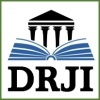Studi Pendahuluan Keanekaragaman Hymenoptera Parasitoid di Kawasan Hijau Kampus UNRI, Panam
(1) Universitas Riau
(2) Universitas Riau
(3) Universitas Riau
(4) Universitas Riau
(5) Universitas Muhammadiyah Jambi
(*) Corresponding Author
Abstract
Berbagai modifikasi terhadap lingkungan dilakukan oleh manusia untuk memenuhi kebutuhan dalam kehidupan dan hal ini berdampak terhadap biodiversitas termasuk serangga. Aktivitas urbanisasi seperti dibangunnya areal perkotaan atau pemukiman, merupakan salah satu bentuk modifikasi lingkungan yang memiliki dampak terhadap biodiversitas tersebut. Kampus UNRI dengan lanskap di dalamnya dapat diamati untuk melihat biodiversitas serangga yang ada di sana. Penelitian ini bertujuan untuk memperoleh data dan informasi mengenai keanekaragaman serangga, khususnya Hymenoptera parasitoid di kawasan hijau Kampus UNRI. Pengambilan sampel serangga tersebar pada delapan lokasi dengan metode penjaringan pada Agustus-September 2019. Sampel serangga yang diperoleh kemudian dikoleksi di dalam tabung koleksi dan diidentifikasi hingga tahapan morfospesies. Secara keseluruhan individu serangga yang paling melimpah berasal dari Ordo Diptera (49%), Hymenoptera (29%), dan Hemiptera (20%), kemudian Thysanura (Thrips sp.), Coleoptera, Lepidoptera, Odonata, dan Orthoptera. Ordo Hymenoptera yang diperoleh berasal dari sembilan superfamili dan 16 famili dengan individu paling melimpah adalah Chalcididae (26%), Braconidae (25%), diikuti dengan Eulophidae dan Scelionidae masing-masing sebesar 12%. Hasil yang diperoleh menggambarkan keanekaragaman Hymenoptera parasitoid yang terdapat di kampus berkaitan erat dengan keberadaan serangga inang dan keanekaragaman dan kelimpahan tumbuhan pada kawasan hijau.
Keywords
Full Text:
PDF (Indonesian)References
Asfiya, W., Lach, L., Majer, J. D., Heterick, B., & Didham, R. K. (2015). Intensive agroforestry practices negatively affect ant (Hymenoptera: Formicidae) diversity and composition in southeast Sulawesi, Indonesia. Asian Myrmecology, 7(1), 87–104.
Firbank, L. G., Petit, S., Smart, S., Blain, A., & Fuller, R. J. (2008). Assessing the impacts of agricultural intensification on biodiversity: A British perspective. Philosophical Transactions of the Royal Society B: Biological Sciences, 363(1492), 777–787. https://doi.org/10.1098/rstb.2007.2183.
Goulet, H. & Huber, J.T. (1993). Hymenoptera of the world: and identification guide to families (No. 595.79 G8).
Grimaldi, D., & Engel, M. S. (2005). Evolution of the Insects. Cambridge University Press: New York.
Grissell, E. E., & Schauff, M. E. (1990). A Handbook of the Families of Nearctic Chalcidoidea (Hymenoptera). The Entomological Society of Washington: Washington.
Hagen, K. S., Mills, N. J., Gordh, G., & McMurtry, J. A. (1999). Terrestrial Arthropod Predators of Insect and Mite Pests. Handbook of Biological Control, 1985, 383–503. https://doi.org/10.1016/b978-012257305-7/50063-1.
Marchiori, C. H. (2019). Parasitoids of Diptera collected in the urban area of Goiânia, Goiás, Brazil. Qeios, 1–5. https://doi.org/10.32388/846248.
Masner L. (1993). Superfamily Platygastroidea. In: Goulet, H., & Huber, J. T (Eds.). Hymenoptera of the World: An Identification Guide to Families. pp. 558–565. Canada Communications Group: Ottawa.
McAlpine, J. F. (1981). Key to families-adults. In Manual of Nearctic Diptera. Vol. 1. Coordinated by McAlpine, J. F., Peterson, B. V., Shewell, G. E., Teskey, H. J., Vockeroth, J. R., & Wood, D. M. Agriculture Canada Monograph No. 27. pp. 89-124.
Merritt, R. W., Courtney, G. W., & Keiper, J. B. (2009). Diptera: (Flies, Mosquitoes, Midges, Gnats). Encyclopedia of Insects, 1, 284–297. https://doi.org/10.1016/B978-0-12-374144-8.00085-0.
Noyes, J. S. (1989). A study of five methods of sampling Hymenoptera (Insecta) in tropical rainforest, with special reference to the parasitica. J. Nat. Hist, 23, 285–298.
Nurdin. (2007). Analisa Pemanfaatan Lahan Kampus Binawidya Universitas Riau Menggunakan Citra Quickbird. Skripsi. Universitas Riau.
Quicke, D. L. J. (1997). Parasitic Wasps. Chapman & Hall: London.
Rader, R., Bartomeus, I., Tylianakis, J. M., & Laliberté, E. (2014). The winners and losers of land use intensification: pollinator community disassembly is non-random and alters functional diversity. Diversity and Distributions, 20(8), 908–917. https://doi.org/10.1111/ddi.12221.
Sharkey, M. J. (2007). Phylogeny and classification of hymenoptera. Zootaxa, 548(1668), 521–548. https://doi.org/10.11646/zootaxa.1668.1.25.
Shaw, M. R. (2006). Habitat considerations for parasitic wasps (Hymenoptera). J. Insect. Conserv, 10(2), 17–127.
Triplehorn, C. A., Johnson, N. F., & Borror, D. J. (2005). Borror and DeLong's Introduction to the Study of Insects. Brooks/Cole Publishing Company: Belmont.
Vitousek, P. M., Mooney, H. A., Lubchenco, J., & Melillo, J. M. (1997). General - The Rocky Mountain Law Journal. Science, 277(July), 494–499.
Wharton, R. A. (1997). Manual of the new world genera of the family Braconidae (Hymenoptera): introduction. In: Wharton, R. A., Marsh, P. M., & Sharkey, M. J (Eds.). Manual of the New World Genera of the Family Braconidae (Hymenoptera). pp: 1-12. The International Society of Hymenopterist: Washington.
Wheeler, A. G. (2008). College campuses: patches of insect diversity, opportunities for entomological discovery, and means for enhancing ecological literacy. American Entomologist, 54(1), 18–35. https://doi.org/10.1093/ae/54.1.18.
DOI: http://dx.doi.org/10.30998/edubiologia.v2i1.11527
Refbacks
- There are currently no refbacks.
Copyright (c) 2022 EduBiologia: Biological Science and Education Journal

This work is licensed under a Creative Commons Attribution-NonCommercial 4.0 International License.
Publish by
Lembaga Penelitian dan Pengabdian Masyarakat
Universitas Indraprasta PGRI
Editorial Office
Jl. Nangka No. 58 C Tanjung Barat Jagakarsa Jakarta Selatan
email: edu.biologia@unindra.ac.id atau edubiologiabsej@gmail.com




This work is licensed under a Creative Commons Attribution-NonCommercial 4.0 International License.







